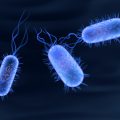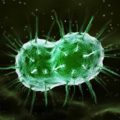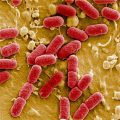salmonellosis - infection, caused by Salmonella. Salmonellosis in children - one of the most frequent acute intestinal infections, which affects even infants and grudnichki. Characterized by severe intoxication and dehydration (dehydration). Mild forms of the disease are a few days, without leaving any consequences. A severe salmonellosis may cause serious complications. It is therefore important at the first sign of illness contact a specialist.
Salmonella - bacteria, remain viable in the environment. The photo shows, that it has an elongated shape. Salmonella good resistance to low temperatures, but its high kill. products, infected with salmonella, do not change the flavor and color, and does not differ from uninfected.
Causes and Salmonella infection
Sick of salmonellosis easily, since salmonella are found everywhere. The most common causes of salmonellosis in children:
- food. products, who have been insufficient heat treatment - chicken and quail eggs, meat and dairy products, may cause salmonellosis.
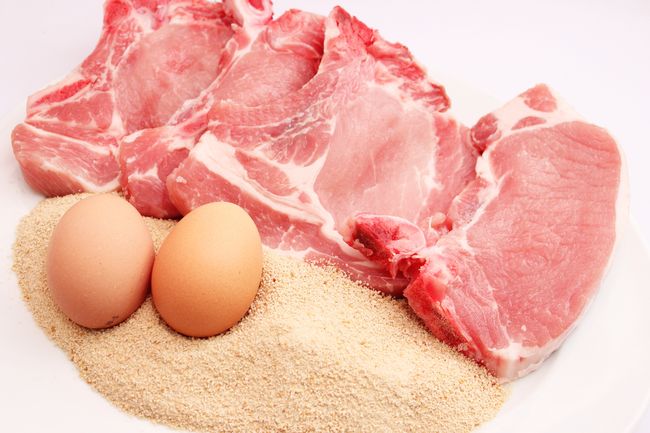
- Contact-household: Bacteria are transmitted from person, already infected with salmonella, or through dirty items.
- transplacental. The infection is transmitted from mother to fetus in utero.
- By inhalation of dust from the causative agent of salmonellosis.
- Wild and domestic animals, who do not get sick, but are carriers of infection.
Children under two years are infected with Salmonella often, because their immune system is not enough strengthened, At the same time, they all love to try "to the tooth".
symptoms
Symptoms of salmonellosis vary depending on the form of the disease, severity, tract infection. The most common lesion of the gastrointestinal tract, this form is called a gastrointestinal. Depending on, What GIT amazed, isolated enteritis, gastritis, colitis, gastroenterit or enterokolit. If it affects the gastrointestinal symptoms of salmonellosis in children appear quickly and are pronounced.
- The temperature rises to 38-39˚S;
- Stomachache, weakness, headache, nausea, dizziness.
- Vomiting, first with the remnants of food, and then watery, with bile.
- there is diarrhea, characterized by foamy, with mucus greenish feces.
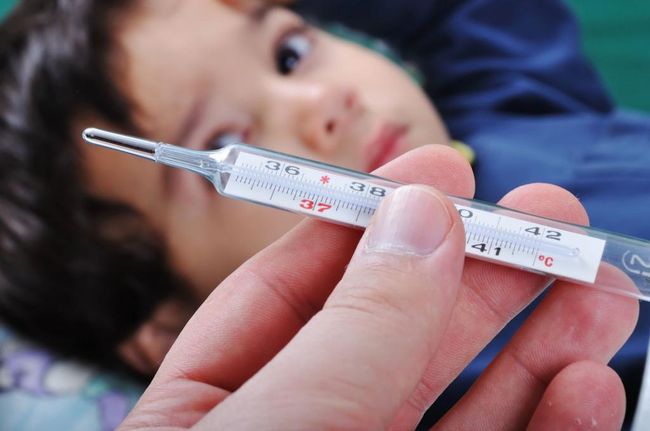
Given the severity of the patient's baby, an important issue for parents is, how long the illness and when to wait for improvement. Difficult to predict in advance, but the average diarrhea lasts about five days, the mild form of the disease can result in the third day. The danger lies in the strong dehydration, especially rapidly developing in newborns and infants. Besides dehydration, there may be other dangerous complications - toxic shock and renal failure.
Severe form of salmonellosis symptoms reminiscent of dysentery. It lasts from one to three weeks in older children, but in infants, weakened, premature babies may appear from a few weeks to a few months.
Tifopodobnaya form is less common, it is typical for older children. Its main symptoms:
- The temperature rises to 39-40˚S.
- Headache, vomiting.
- There is stupefaction, rave, hallucinations.
- In the language of visible gray-brown patina.
- On palpation there is pain in the right iliac region, life vzdut.
- On the fourth or the sixth day of illness liver and spleen were enlarged.
- On the sixth day of the rash may appear on the abdomen.
note! In the form of salmonella typhoid recovery occurs via 1-1,5 of the month.
Septic - the most rare, and at the same time the most complex and serious form of salmonella. It affects mainly infants, weakened and premature babies. Salmonellosis has such symptoms in children:
- Prolonged fever - within three to four weeks, with profuse sweating and chills.
- Purulent lesions in various organs.
- more frequent stools.
Septic form of salmonellosis is very dangerous, since the probability of chronic sepsis with organ lesions, and significantly increases the risk of death.
note! After the disappearance of symptoms of the disease the child may still for three months, to allocate the bacteria.
complications
The consequences of salmonellosis depend on the form of the disease and its severity. Mild form can pass without complications. In more severe cases, the formation of foci of inflammation of internal organs. It happens, if Salmonella from the gut invade other organs and spread throughout the body.
Salmonellosis causes immunodeficiency in children, so often a layering of secondary infection or exacerbation of existing chronic diseases. uncommon, when after suffering salmonellosis child is often sick with pneumonia, otitis or tonsillitis.
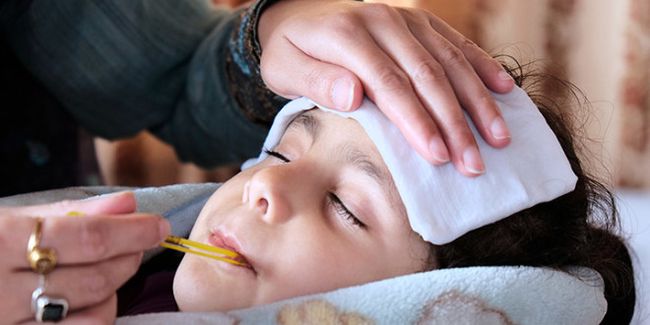
Other serious complications:
- pulmonary edema;
- cephaledema;
- arthritis;
- kidney failure;
- toxic shock.
These complications can lead to death, why it is so important diagnosis and timely treatment of such terrible and dangerous disease, like salmonella.
Diagnostics
Acute intestinal infection can be caused by various pathogens, for a more accurate diagnosis is necessary to conduct a number of studies. What tests should be done, to confirm the diagnosis of "salmonellosis"?
- bakposev blood, kala, vomit, urine, CSF.
- General blood analysis.
- RSA and ELISA for detecting antibodies in blood and urine.
- coprogram.
At the general survey of the sick child doctor pays attention to language - salmonellosis he thickly coated, at the rumbling and pain in the right iliac region, on the chair, which has a very unpleasant smell and looks, like swamp mud. All of these symptoms in children allow the doctor to suspect salmonella, and an accurate diagnosis is possible only after receiving the test results.
Treatment
Depending on the severity of the condition of the sick child and his age, Treatment of salmonellosis in children can be done both at home, and in the hospital.
In mild form of treatment possible at home, but parents need to monitor the completion of the liquid and prevent dehydration, and also carefully comply with all recommendations of the physician.
Remember! Self salmonellosis is unacceptable and may result in extremely negative consequences. Therefore, all medications can be used only on prescription.
Hospitalization subject to children with severe disease, weakened children and toddlers up to three years. In the hospital complex treatment is conducted: dietary management, bed rest, cleansing the body of toxins and fight against dehydration.
The mainstay of treatment is drugs, the effect of which is aimed at destroying the bacteria - antibiotics and antiseptics. The most frequently prescribed antibiotics of cephalosporin group. When enzymes are assigned shape gastroinstetsialnoy.
To cleanse the body of toxins prescribed gastric lavage and hemosorption.
In severe dehydration and impossibility oral rehydration used intravenous infusion of saline and glucose. If a child is able to drink, then it is assigned Regidron, Oral or similar means. Should be given a teaspoon of solution every five minutes.
note! If a child refuses to take special means, it can otpaivat Morse, compotes, water and other liquids. Home - to ensure adequate intake of water into the body.
If severe diarrhea appointed antidiarrheals. But we should remember, that diarrhea - this is one way to rid the body of toxins, so the decision on the need to take antidiarrheal medications may only be a doctor.
children, which for a long time are bacteria carriers, appoint bacteriophages, means to enhance immunity and probiotics. These drugs are needed in a protracted course of illness.
Diet
An important condition for the successful treatment of salmonellosis is dieting. Tots, breastfed, continue to breastfeed. "Bottle-" fed the usual mixtures, and if the child is more than six months, it is possible to include in the diet of rice and buckwheat porridge and vegetable purees (if the child is already familiar with these products). Diet for salmonellosis in older children intended to exclude from the diet of animal fats, whole milk, rye bread, fresh fruits and vegetables. But you can give your baby:
- soup of pureed vegetables;
- boiled lean fish;
- rice, oat or buckwheat water;
- steam cutlets, cooked meat, preferably chopped;
- fresh cheese;
- wheat bread, crackers, no butter biscuits;
- fruit jelly and stewed fruit.
In question, as a strict diet should be continued, should take into account the patient's condition. After improving to introduce new products should gradually.

prevention
An important role is played by the prevention of salmonellosis in children. Due to the basic rules, you can significantly reduce the risk of infection:
- Eat well thermally processed meat and eggs.
- Wash hands after contact with raw meat and eggs.
- Carefully wash fruits and vegetables before eating.
- To monitor the cleanliness of children's toys and the, the baby did not take into objects mouth.
- Buy products in proven areas, to monitor shelf life.
But such rules, as washing hands before eating, regular wet cleaning must always be respected, since they protect against many diseases.
Komarovsky advises not to panic at the first sign of salmonellosis in children, but primarily to analyze, that it could provoke disease. This will help in the future to exercise vigilance and prevent reinfestation.



